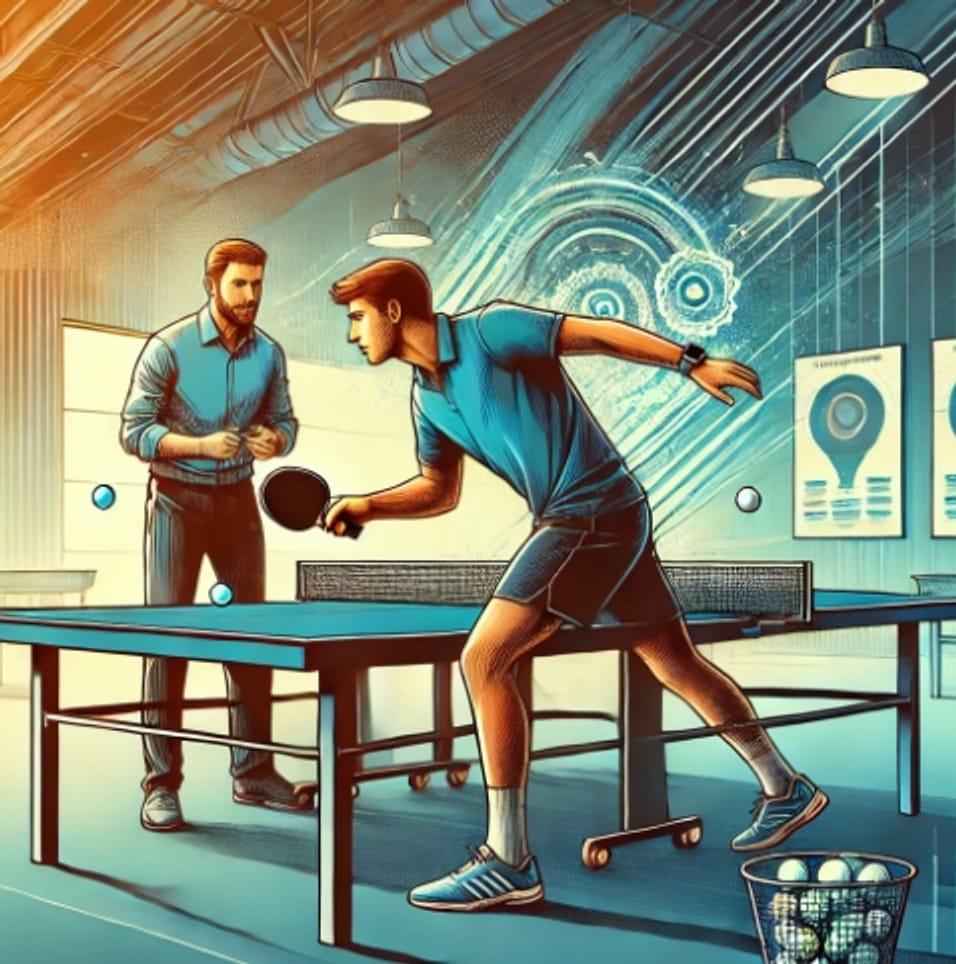Table tennis is a sport that requires precise technique and quick reflexes. Not only technical practice, but also consistent repetition and a strategic approach are important.
However, many people focus only on hitting the ball without thinking, missing out on efficient practice methods. By implementing a systematic practice method to improve your skills, you can achieve amazing results even in a short time.
Today, we introduce 5 effective practice methods to take your table tennis skills to the next level. Each method is useful for both beginners and advanced players, and includes practical tips.

Table Tennis Skill
Basic training to correct swing and posture
The foundation of table tennis skill starts with the correct swing and posture. Especially for beginners, it is important to correct incorrect posture and swing before they become ingrained habits. Correct posture is essential for increasing the precision of technique and improving movement and reaction speed during the game.
Training methods:
- Hitting the ball repeatedly towards a wall: Check the angle of the racket and the movement of your arm while handling the ball reflected off the wall. Wall training is effective in cultivating the consistency of your swing.
- Practice using a mirror: Check your swing movements in front of a mirror to correct your posture, or film your movements and analyze them. This makes it easy to find areas for improvement as you can visually check your posture.
- Footwork and balance training: Practice natural movement and balance, adjusting your foot position to be optimized for the moment of impact.
- Effect: A stable swing and correct posture improve both accuracy and power. It prevents bad habits and allows you to build a solid foundation.
Forehand and backhand transition practice
Forehand and backhand are the most frequently used techniques in table tennis, and smooth transitions are a key element that determines game performance. The ability to quickly change direction maximizes the efficiency of attack and defense.
Training methods:
- Cooperative practice with a partner: Practice the smoothness of the transition movement through training with a partner who sends the ball alternately to the right and left.
- Speed control training: Start slowly at first and gradually increase the transition speed, practicing handling balls coming at various speeds.
- Spin ball handling training: Learn the technique of hitting balls with various spins such as backspin and topspin while transitioning. This provides technical flexibility in the game.
- Effect: Smooth transitions between forehand and backhand allow you to respond flexibly to your opponent's attacks and enable unpredictable strategies.
Specialized training to improve service technique
The serve is the first opportunity in a game to put pressure on your opponent. Excellent service technique makes it difficult for your opponent to return and is effective in taking the initiative.
Training methods:
- Setting target points: Set a specific point near the net and practice hitting the ball with various directions and spins, aiming for the target.
- Continuous serve training: Prepare 10-20 balls during practice and serve continuously with various spins and angles. Develop consistency through repetition.
- Pattern development: Develop specific patterns that make it difficult for your opponent to return, and repeatedly execute them, building your own style that can be used during matches.
- Effect: By increasing the consistency and variety of your serve, you can create advantageous situations from the beginning of the game and put psychological pressure on your opponent.
Strengthening agility through footwork training
In table tennis, the direction and speed of the ball change rapidly, so agile footwork is essential. Proper footwork improves accessibility to the ball and the quality of the hit.
Training methods:
- Step practice: Without a ball, repeatedly practice steps by moving quickly left and right and back and forth to build the basics of footwork.
- Movement practice using a ball: Move left, right, and center according to the direction of the ball, practicing swinging and moving simultaneously.
- Using line tape: Attach line tape to the floor or set up cones and move along a designated path to increase agility and the speed of direction changes.
- Effect: Strengthens the ability to quickly approach the ball and hit from an ideal position, allowing you to efficiently cope with sudden changes during the game.
Situation-based practice mimicking opponents
Practicing in situations similar to actual games is effective in increasing responsiveness in real matches. Simulating various game situations strengthens your ability to adapt to real matches.
Training methods:
- Real-game practice with a partner: The partner alternately performs attacks and defenses like a real game, and trains to respond to irregular plays.
- Mimicking opponent's styles: Practice various patterns by mimicking offensive, defensive, or spin-centered styles. This helps you prepare for various opponents.
- Score-based games: Practice like a real match by assigning scores under the assumption that it is an important match. This is effective in overcoming psychological pressure during the game.
- Effect: Develops the ability to adapt quickly when encountering various opponents and to respond to the flow of the game.
Table tennis skills don't improve overnight, but consistent practice of the above methods will yield definite results. Clearly define your goals, systematically implement each training method, and address your weaknesses. It is also important to analyze your own game performance and apply feedback after practice.

Comments0